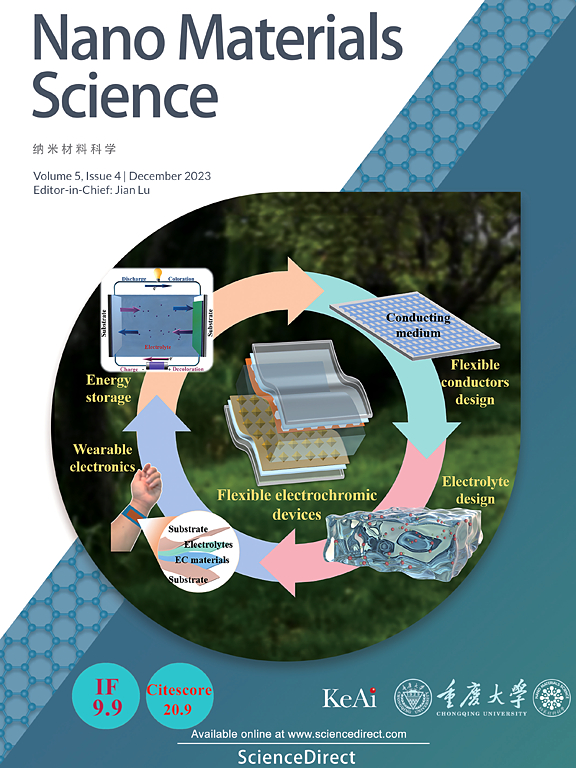经表面机械研磨处理的镍基超级合金结构:抗压性能和塌陷行为
IF 17.9
2区 材料科学
Q1 Engineering
引用次数: 0
摘要
表面改性可以在人造微晶格中引入自然梯度或结构层次,使其同时具有强度和韧性。在此,我们介绍了我们对添加制造的镍铬超级合金(IN625)微晶格经过表面机械损耗处理(SMAT)后的机械性能和内在机理的研究。我们的研究结果表明,SMAT 使这些微晶格的屈服强度提高了 64.71% 以上,并引发了其机械性能的转变。我们发现了两种主要的失效模式:微弱的整体变形和逐层塌陷,后者在 SMAT 的作用下得到了增强。机械性能的明显改善归功于 SMAT 诱导的超细和坚硬的分级纳米晶粒层,它有效地利用了材料和结构效应。有限元分析进一步验证了这些结果。这项研究深入揭示了塌陷行为,有助于设计超轻且抗弯曲的蜂窝材料。本文章由计算机程序翻译,如有差异,请以英文原文为准。
Nickel-based superalloy architectures with surface mechanical attrition treatment: Compressive properties and collapse behaviour
Surface modifications can introduce natural gradients or structural hierarchy into human-made microlattices, making them simultaneously strong and tough. Herein, we describe our investigations of the mechanical properties and the underlying mechanisms of additively manufactured nickel–chromium superalloy (IN625) microlattices after surface mechanical attrition treatment (SMAT). Our results demonstrated that SMAT increased the yielding strength of these microlattices by more than 64.71% and also triggered a transition in their mechanical behaviour. Two primary failure modes were distinguished: weak global deformation, and layer-by-layer collapse, with the latter enhanced by SMAT. The significantly improved mechanical performance was attributable to the ultrafine and hard graded-nanograin layer induced by SMAT, which effectively leveraged the material and structural effects. These results were further validated by finite element analysis. This work provides insight into collapse behaviour and should facilitate the design of ultralight yet buckling-resistant cellular materials.
求助全文
通过发布文献求助,成功后即可免费获取论文全文。
去求助
来源期刊

Nano Materials Science
Engineering-Mechanics of Materials
CiteScore
20.90
自引率
3.00%
发文量
294
审稿时长
9 weeks
期刊介绍:
Nano Materials Science (NMS) is an international and interdisciplinary, open access, scholarly journal. NMS publishes peer-reviewed original articles and reviews on nanoscale material science and nanometer devices, with topics encompassing preparation and processing; high-throughput characterization; material performance evaluation and application of material characteristics such as the microstructure and properties of one-dimensional, two-dimensional, and three-dimensional nanostructured and nanofunctional materials; design, preparation, and processing techniques; and performance evaluation technology and nanometer device applications.
 求助内容:
求助内容: 应助结果提醒方式:
应助结果提醒方式:


